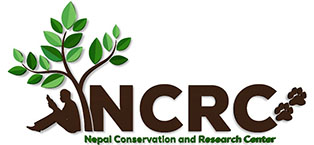A success story: Eggs hatching and release into the wild of an Endangered Narrow-headed softshell turtle from Chitwan, Nepal.
Chitwan National Park is famous for rhinos and tigers, hold second largest population of Greater one-horned rhino in the world and known as ‘rhino land’ as this park hosts highest number of Greater one-horned rhinos and tigers in Nepal. The occurrence of highly charismatic species such as rhinos and tigers have received conservation attentions by park authorities and other conservation agencies. The conservation interventions only for these charismatic species have kept other species such as turtle into “shadow”. A recent study on “Notes on sucessful Nest Relocation of Chitra indica (Gray, 1831) from Chitwan National Park, Nepal” by Bed Bahadur Khada, Saneer Lamichhane and NCRC team member Santosh Bhattarai highlights the conservation actions needed for and Endangered turtle species, Narrow-headed softshell turtle.
Chitwan National Park experiences irregular floods every year. The construction of dyke on the bank of the river towards village side to save buffer zone villages of the park and excavation of riverbed materials (such as sand, gravel, stone etc) have changed the habitat of aquatic animals such as turtles and crocodiles and has limited the safer nesting grounds for such aquatic animals. The team observed three nests of Narrow-headed softshell turtle in flood prone inundation zone in the Rapti river of Chitwan National Park.

Figure 1. Nest of Narrow-headed softshell turtle in Rapti river, Chitwan National Park. Photo: Bed Khadka
The team relocated safely collected 496 eggs from three nests from the riverbank and relocated to the safer site with same size and dimension nests. The eggs incubated and hatched in seminatural condition and hatchlings emerged in 54 ( averaged days for three nests).

Figure 2. Hatchlings from relocated nest. Photo: Bed Khadka
Out of 496 eggs, 375 hatchlings were safely released in the wild in the Rapti river of Chitwan National Park. The successful eggs collection, hatching in safer site and release into the wild is a success story of and Endangered turtle species to send back the hatchlings in their original home. However, its is and indicative that there is many actions awaiting to safeguard the nesting and breeding habitat of turtles and other aquatic habitat. Park authorities and tiger and rhino centric conservation agencies should implement integrated conservation steps.

Figure 3. Hatchlings of Narrow-headed softshell turtle after release into the wild in Rapti river. Photo: Bed Khakda


